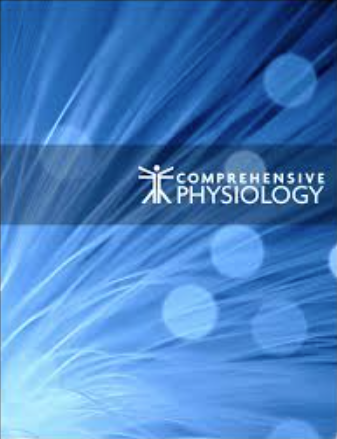求助PDF
{"title":"参与处理前庭输入和产生控制血压的前庭交感反射的中枢网络。","authors":"Brendan McCarthy, Luke A Henderson, Vaughan G Macefield","doi":"10.1002/cphy.c220021","DOIUrl":null,"url":null,"abstract":"<p><p>The vestibular apparatus is highly specialized for detecting linear and angular acceleration, contributing importantly to perception of our position in the gravitational field and to motion in the three spatial axes. Beginning in the inner ear, spatial information is relayed toward higher cortical regions for processing, though the specific locations at which this action takes place remain somewhat ambiguous. This article aims to highlight brain regions known to be involved in the processing of spatial information, as well as those that contribute to a less widely documented function of the vestibular system-its capacity to regulate blood pressure via vestibulosympathetic reflexes. As we go from lying to standing, there is a proportional increase in muscle sympathetic nerve activity (MSNA) to the legs that prevents the fall in blood pressure associated with the pooling of blood toward the feet. While feedback from baroreceptors is partially responsible, vestibulosympathetic reflexes operate in a feed-forward manner to compensate for postural changes in the gravitational field. The cortical and subcortical network comprising the central sympathetic connectome shares certain elements with the vestibular system, and it is known that vestibular afferents project via the vestibular nuclei to the rostral ventrolateral medulla (RVLM)-the final output nucleus for generating MSNA. Here we consider how vestibular afferents interact with other components of the central sympathetic connectome, with particular emphasis on the potential roles of the insula and dorsolateral prefrontal cortex (dlPFC) as possible core integrative sites for vestibular and higher cortical processes. © 2023 American Physiological Society. Compr Physiol 13:4811-4832, 2023.</p>","PeriodicalId":10573,"journal":{"name":"Comprehensive Physiology","volume":"13 3","pages":"4811-4832"},"PeriodicalIF":4.2000,"publicationDate":"2023-06-26","publicationTypes":"Journal Article","fieldsOfStudy":null,"isOpenAccess":false,"openAccessPdf":"","citationCount":"0","resultStr":"{\"title\":\"The Central Network Involved in the Processing of Vestibular Inputs and the Generation of Vestibulosympathetic Reflexes Controlling Blood Pressure in Humans.\",\"authors\":\"Brendan McCarthy, Luke A Henderson, Vaughan G Macefield\",\"doi\":\"10.1002/cphy.c220021\",\"DOIUrl\":null,\"url\":null,\"abstract\":\"<p><p>The vestibular apparatus is highly specialized for detecting linear and angular acceleration, contributing importantly to perception of our position in the gravitational field and to motion in the three spatial axes. Beginning in the inner ear, spatial information is relayed toward higher cortical regions for processing, though the specific locations at which this action takes place remain somewhat ambiguous. This article aims to highlight brain regions known to be involved in the processing of spatial information, as well as those that contribute to a less widely documented function of the vestibular system-its capacity to regulate blood pressure via vestibulosympathetic reflexes. As we go from lying to standing, there is a proportional increase in muscle sympathetic nerve activity (MSNA) to the legs that prevents the fall in blood pressure associated with the pooling of blood toward the feet. While feedback from baroreceptors is partially responsible, vestibulosympathetic reflexes operate in a feed-forward manner to compensate for postural changes in the gravitational field. The cortical and subcortical network comprising the central sympathetic connectome shares certain elements with the vestibular system, and it is known that vestibular afferents project via the vestibular nuclei to the rostral ventrolateral medulla (RVLM)-the final output nucleus for generating MSNA. Here we consider how vestibular afferents interact with other components of the central sympathetic connectome, with particular emphasis on the potential roles of the insula and dorsolateral prefrontal cortex (dlPFC) as possible core integrative sites for vestibular and higher cortical processes. © 2023 American Physiological Society. Compr Physiol 13:4811-4832, 2023.</p>\",\"PeriodicalId\":10573,\"journal\":{\"name\":\"Comprehensive Physiology\",\"volume\":\"13 3\",\"pages\":\"4811-4832\"},\"PeriodicalIF\":4.2000,\"publicationDate\":\"2023-06-26\",\"publicationTypes\":\"Journal Article\",\"fieldsOfStudy\":null,\"isOpenAccess\":false,\"openAccessPdf\":\"\",\"citationCount\":\"0\",\"resultStr\":null,\"platform\":\"Semanticscholar\",\"paperid\":null,\"PeriodicalName\":\"Comprehensive Physiology\",\"FirstCategoryId\":\"3\",\"ListUrlMain\":\"https://doi.org/10.1002/cphy.c220021\",\"RegionNum\":2,\"RegionCategory\":\"医学\",\"ArticlePicture\":[],\"TitleCN\":null,\"AbstractTextCN\":null,\"PMCID\":null,\"EPubDate\":\"\",\"PubModel\":\"\",\"JCR\":\"Q1\",\"JCRName\":\"PHYSIOLOGY\",\"Score\":null,\"Total\":0}","platform":"Semanticscholar","paperid":null,"PeriodicalName":"Comprehensive Physiology","FirstCategoryId":"3","ListUrlMain":"https://doi.org/10.1002/cphy.c220021","RegionNum":2,"RegionCategory":"医学","ArticlePicture":[],"TitleCN":null,"AbstractTextCN":null,"PMCID":null,"EPubDate":"","PubModel":"","JCR":"Q1","JCRName":"PHYSIOLOGY","Score":null,"Total":0}
引用次数: 0
引用
批量引用


